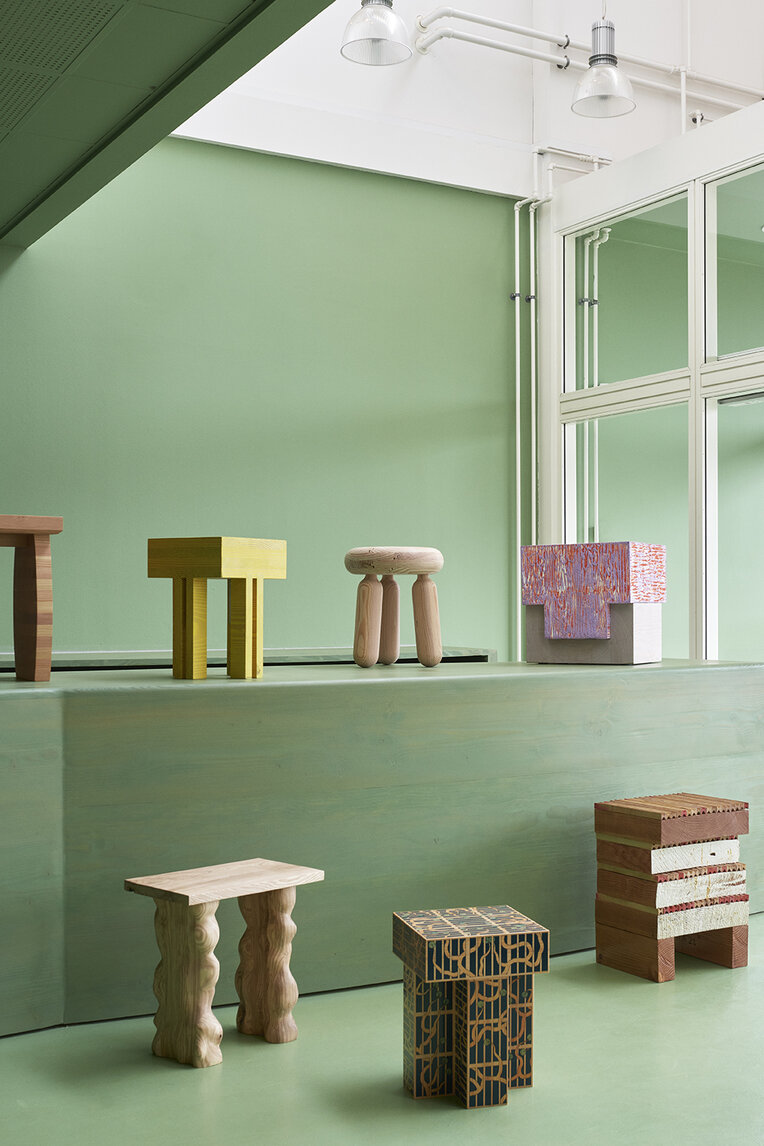Sit down on an original sustainable work of art that Tableau and Ari Prasetya conceptualized
Copenhagen Contemporary Café is one of Scandinavia’s greatest international art centers and cultural districts presenting designers. It’s in a converted welding shop of 7,000 square meters and has the ideal balance of industrial and immersive settings.
This spectacular venue, which opened in 2016, frequently welcomes artists and a variety of avant-garde installations, screenings, and performances.
As part of their commitment to presenting and promoting design created by both well-known and up-and-coming artists, Copenhagen Contemporary unveiled café Connie Connie on their property.
The gallery decided to make its flamboyant aesthetic statement rather than filling this space with only functional furniture pieces.
This 150-square-meter restaurant features a diverse selection of sustainable seating created by 25 up-and-coming Danish and international artists, designers, and architects. It was created as a result of the brilliant collaboration between the art center, the Danish multidisciplinary studio Tableau, and Australian designer Ari Prasetya.
I addition to Tableau and Prasetya, there are other up-and-coming and established artists, including, among others, Anna Clarisse Holck Waehrens, Anne Brandhj, Arnaud Eubelen, Bram Vanderbeke, Carsten In Der Elst, Davide Ronco, Frederik Gustav, Jacob Egeberg, Janis Karasevskis, Kevin Josias, Kim Lenschow, Kristine Mandsberg, Laurids Gall
In fact, the gallery’s general concept was by Tableau and Prasetya, and it features dynamic and innovative designs.
Together, they created many artworks and worked on the café’s interior design.
“We wanted to investigate how furniture may transform into useful works of art. How material and a direction incorporating several designers can influence design. According to Tableau’s creative director and designer, Julius Vaernes Iversen and Katrine Morel, that was their goal.
Moreover, the room has a painting of expansive expanses of brilliant sage green and plaster white. Extra-long curtains and pendant lights enhance the tremendous verticality of the double-height space.
This vibrant color dominates the room’s color scheme, drawing attention to the two-tone green and white walls and the lush flooring while also creating a backdrop for the café’s true focal point and main draw. Its vast range of distinctively designed chairs.

It’s difficult to miss the resulting assortment of stools, benches, and chairs scattered throughout the café.
Each piece breathes new life into the room, giving it soul and individuality and acting as subtly displayed discussion pieces.
This eclectic line-up of fashionable seating surrounds custom green tables made in-house by Tableau and goes well with the minimalist bar, long desk by the window, large dining table, and three classic chairs designed by Prasetya.
Additionally, the designers’ skillfully crafted handmade seating that graces the café using the same Douglas fir off-cuts supplied by Danish wood flooring business Dinesen. The company that served as the inspiration for the space’s striking green color scheme.
“The concept was to use a commodity that typically has little use, which are leftover materials from their plank manufacture. When touring the Dinesen production facility in the south of Denmark with decided the decision to paint all floors and walls a uniform teen to further create a cohesive design with a selection of furniture, they continue.
Copenhagen Contemporary Café: 25 designers create chairs from wood scraps
A unified brand unites the group’s many ways of thinking. Even yet each designer was entrusted with printing their distinctive approach to the seating ring their character.
This rich family of distinctive seating connects with common material and consists of warm, natural wooden furniture pieces. These pieces blend in seamlessly with the green and white environment while fostering a synergy between various ideas.
Moreover, special laser techniques produce patterns in the inventive and quirky wood off-cuts. Using sustainable approaches to make new iterations of wasted wood. This resulted in a wide range of designs, textures, and finishes where no two pieces are identical.
Furthermore, the furniture, which ranges in style from massive, block-like industrial sitting to delicate wooden wonders and shapely seats, is a collection of works of art that showcases its capacity for innovation to go beyond basic functionality and into the realm of aesthetic possibility.
All of the furniture in the café is available for purchase from the gallery. This adds another level of interaction between the guests and the interior furnishings as they purchase a piece of Connie-Connie.

Read more on Archup:
42000 bamboo reeds used to build a welcome center in Vietnam







